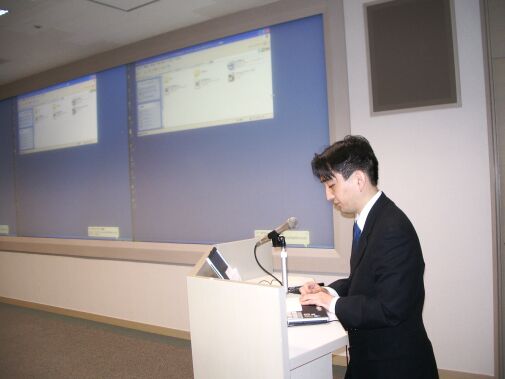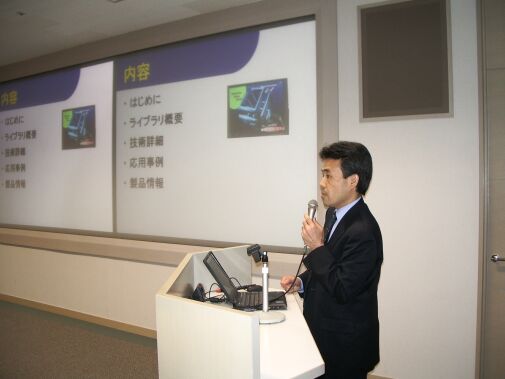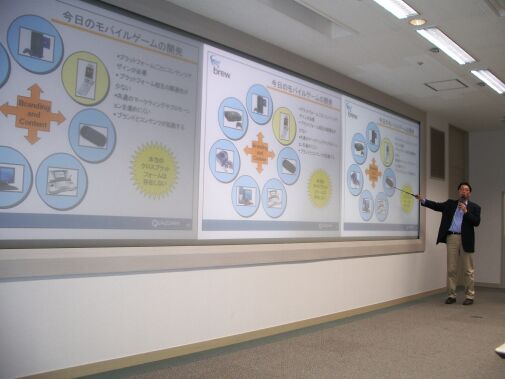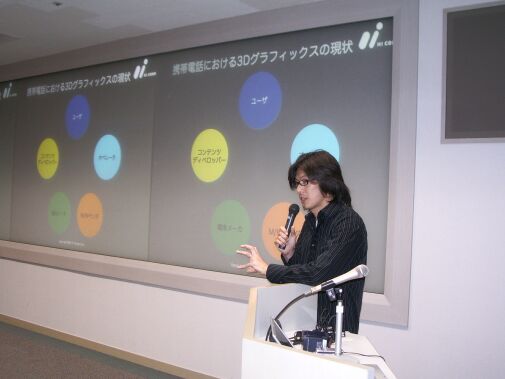 |
 |
 |
 |
 |
 |
 July 28 - August 11, 2014
July 28 - August 11, 2014
|
 |
 |
 |  |
 |
 |
 June 19, 2014
June 19, 2014
|
 |
 |
 |  |
 |
 |
 February 26, 2014
February 26, 2014
|
 |
 |
 |  |
 |
 |
 January 29, 2014
January 29, 2014
|
 |
 |
 |  |
 |
 |
 December 9, 2013
December 9, 2013
|
 |
 |
 |  |
 |
 |
 November 28, 2013
November 28, 2013
|
 |
 |
 |  |
 |
 |
 August 24 and 25, 2013
August 24 and 25, 2013
|
 |
 |
 |  |
 |
 |
 June 27, 2013
June 27, 2013
|
 |
 |
 |  |
 |
 |
 February 27, 2013
February 27, 2013
|
 |
 |
 |  |
 |
 |
 December 11, 2012
December 11, 2012
|
 |
 |
 |  |
 |
 |
 November 28, 2012
November 28, 2012
|
 |
 |
 |  |
 |
 |
 September 27, 2012
September 27, 2012
|
 |
 |
 |  |
 |
 |
 June 14, 2012
June 14, 2012
|
 |
 |
 |  |
 |
 |
 February 24, 2012
February 24, 2012
|
 |
 |
 |  |
 |
 |
 December 13, 2011
December 13, 2011
|
 |
 |
 |  |
 |
 |
 September 16, 2011
September 16, 2011
|
 |
 |
 |  |
 |
 |
 June 17, 2011
June 17, 2011
|
 |
 |
 |  |
 |
 |
 May 27, 2011
May 27, 2011
|
 |
 |
 |  |
 |
 |
 February 18, 2011
February 18, 2011
|
 |
 |
 |  |
 |
 |
 December 14, 2010
December 14, 2010
|
 |
 |
 |  |
 |
 |
 September 17, 2010
September 17, 2010
|
 |
 |
 |  |
 |
 |
 July 27, 2010
July 27, 2010
|
 |
 |
 |  |
 |
 |
 June 18, 2010
June 18, 2010
|
 |
 |
 |  |
 |
 |
 May 14, 2010
May 14, 2010
|
 |
 |
 |  |
 |
 |
 November 2009 - March 2010
November 2009 - March 2010
|
 |
 |
 |  |
 |
 |
 February 19, 2010
February 19, 2010
|
 |
 |
 |  |
 |
 |
 October 5-6, 2009
October 5-6, 2009
|
 |
 |
 |  |
 |
 |
 September 17, 2009
September 17, 2009
|
 |
 |
 |  |
 |
 |
 August 28, 2009
August 28, 2009
|
 |
 |
 |  |
 |
 |
 June 12, 2009
June 12, 2009
|
 |
 |
 |  |
 |
 |
 May 22, 2009
May 22, 2009
|
 |
 |
 |  |
 |
 |
 February 20, 2009
February 20, 2009
|
 |
 |
 |  |
 |
 |
 December 19, 2008
December 19, 2008
|
 |
 |
 |  |
 |
 |
 September 12, 2008
September 12, 2008
|
 |
 |
 |  |
 |
 |
 July 18, 2008
July 18, 2008
|
 |
 |
 |  |
 |
 |
 June 9, 2008 June 9, 2008
|
 |
 |
 |  |
 |
 |
 February 22, 2008 February 22, 2008
|
 |
 |
 |  |
 |
 |
 November 22, 2007 November 22, 2007
|
 |
 |
 |  |
 |
 |
 September 28, 2007 September 28, 2007
|
 |
 |
 |  |
 |
 |
 July 20, 2007 July 20, 2007
|
 |
 |
 |  |
 |
 |
 April 20, 2007 April 20, 2007
|
 |
 |
 |  |
 |
 |
 February 16, 2007 February 16, 2007
|
 |
 |
 |  |
 |
 |
 December 14, 2006 December 14, 2006
|
 |
 |
 |  |
 |
 |
 November 20, 2006 November 20, 2006
|
 |
 |
 |  |
 |
 |
 September 27, 2006 September 27, 2006
|
 |
 |
 |  |
 |
 |
 June 29, 2006 June 29, 2006 |
 |
 |
 |  |
 |
 |
 May 23, 2006 May 23, 2006
|
 |
 |
 |  |
 |
 |
 April 28, 2006 April 28, 2006
|
 |
 |
 |
 |
 |
 |
 February 17, 2006
February 17, 2006
|
 |
 |
 |
 |
 |
 |
 November 16, 2005
November 16, 2005
|
 |
 |
 |
 |
 |
 |
 October 19, 2005
October 19, 2005
|
 |
 |
 |
 |
 |
 |
 September 2, 2005
September 2, 2005
|
 |
 |
 |
 |
 |
 |
 July 20, 2005
July 20, 2005
|
 |
 |
 |
 |
 |
 |
 June 15, 2005
June 15, 2005
|
 |
 |
 |
 |
 |
 |
 May 27, 2005
May 27, 2005
|
 |
 |
 |
 |
 |
 |
 February 15, 2005
February 15, 2005
|
 |
 |
 |
 |
 |
 |
 November 25, 2004
November 25, 2004
|
 |
 |
 |
 |
 |
 |
 September 8, 2004
September 8, 2004
|
 |
 |
 |
 |
 |
 |
 July 27, 2004
July 27, 2004
|
 |
 |
 |
 |
 |
 |
 June 23, 2004
June 23, 2004
|
 |
 |
 |
 |
 |
 |
 May 28, 2004
May 28, 2004
|
 |
 |
 |
 |
 |
 |
 May 13th, 2004
May 13th, 2004
|
 |
 |
 |
 |
 |
 |
 February 24th, 2004
February 24th, 2004
|
 |
 |
 |
 |
 |
 |
 February 24th, 2004
February 24th, 2004
|
 |
 |
 |
 |
 |
 |
 February 24th, 2004
February 24th, 2004
|
 |
 |
 |
 |
 |
 |
 December 17th, 2003
December 17th, 2003
|
 |
 |
 |
 |
 |
 |
 November 26th 2003
November 26th 2003
|
 |
 |
 |
 |
 |
 |
 October 30th 2003
October 30th 2003
|
 |
 |
 |
 |
 |
 |
 September 10th, 2003
September 10th, 2003
|
 |
 |
 |
 |
 |
 |
 September 10th, 2003
September 10th, 2003
|
 |
 |
 |
 |
 |
 |
 July 30th, 2003
July 30th, 2003
|
 |
 |
 |
 |
 |
 |
 June 25th, 2003
June 25th, 2003
|
 |
 |
 |
 |
 |
 |
 May 28th, 2003
May 28th, 2003
|
 |
 |
 |
 |
 |
 |
 May 28th, 2003
May 28th, 2003
|
 |
 |
 |
 |
 |
 |
 April 16th, 2003
April 16th, 2003
|
 |
 |
 |
 |
 |
 |
 March 4th, 2003
March 4th, 2003
|
 |
 |
 |
 |
 |
|
 |
|
Report of the 3D Consortium Study Session jointly organized by the Technology Sub Committee and the Viewer WG
(Venue: SGI Hall, Ebisu) |
 |
April 28, 2006 |
 |
 |
|
The Study Session was jointly organized by the Technology Sub Committee and Viewer WG at the SGI Hall in Yebisu Garden Place, Tokyo on April 28. The theme for this Study Session was a "Report on the results of consideration of the contents of a proposal which will be submitted to the government, and trends of the latest 3D software." There were 23 members at the study session for a total of 35 people attending.
|
 |
 |
|
A report on the results of consideration of the contents of a proposal which will be submitted to the government by the Viewer WG
Professor, School of Information Environment, Tokyo Denki University / President of Netplus Co., Ltd.
Dr. Yasushi Niitsu
Lecture Summary
The Viewer WG has been considering formats of stereoscopic images, research on structures of 3D displays which were released by various manufacturers, and methods to present stereoscopic images which are used by various displays. Our future direction is toward development of software which actually displays stereoscopic images or to support creation of contents. Currently, we are planning to submit a software development project as "Development of a system to support stereoscopic imaging media creation" to the Information-Technology Promotion Agency, Japan (IPA) which is associated with the Ministry of Public Management, Home Affairs, Posts and Telecommunications. In this regard, we are going to have further discussions with IPA to prepare for a full-fledged start of development in the next year. Our current idea is to offer most of the software to be developed free of charge or as open source software.
|
 |
 |
|
Development of 3D applications which support stereoscopic images by authoring tools - MatrixEngine embedded ISL edition -
3DMC Partner Chief Creator, Netdimension Corporation
Mr. Hiroki Kimura
 Lecture Summary
After emergence of hardware which handles 3D expressions, it became possible to add stereoscopic expressions with depth to traditional 2D images. Together with various contents, introduction of stereoscopic expressions became available also as an interface of operation screens on various mobile terminals. In terms of 3D contents, there are two major categories, which are "movie contents" and "real-time contents," but generally speaking, the difference between them is not recognized very well. "Real-time contents" are especially advantageous to achieve bi-directional communication with users. This characteristic is useful for expansion of the ranges of applications while numerous kinds of expertise including programming are required for production, which results in a challenge. In addition, close cooperation between designers and programmers is necessary which also requires a lot of effort in the development environment. This lecture will be an introduction of "MatrixEngine embedded ISL edition" which added support of the stereoscopic view API named "ISL" offered by SGI Japan to our authoring tool "MatrixEnginieSDK," which was made together with a presentation of a method to efficiently proceed with development of 3D applications by using "MatrixEngine embedded ISL edition."
|
 |
 |
|
Middleware which handles multiple types of 3D displays and case examples of development of its applications
Chief Graphics Consultant, SGI Japan, Ltd.
Mr. Masanori Kakimoto
 Lecture Summary
For popularization of displays showing stereoscopic images without special glasses, the existence of various types of attractive contents and applications are essential. However, there are different specifications of displays which support stereoscopic views without special glasses, and it is very difficult to develop applications which support every type of such specifications. To solve this problem, we developed middleware which supports multiple types of displays which show stereoscopic images without glasses, which we called "Interactive Stereo Library (ISL)." ISL is a group of functions (mathematical schemes) which are called on by 3D graphics applications written with OpenGL. By using ISL, it is possible for applications to show stereoscopic images without recognizing specifications of displays which present stereoscopic images without requiring the use of glasses. By setting environmental variables to select the type of displays showing stereoscopic images without requiring glasses, end users can use the same application on a different display which uses different specifications for presenting stereoscopic images. Currently, ISL supports around a dozen types of displays which were released by six manufacturers showing stereoscopic images without the need for special glasses. The range of its application varies including visualization of scientific and engineering calculations, molecular design, and design review in the fields of manufacturing, mobile phones and the entertainment industry.
|
 |
 |
|
Implementation of OpenGL ES in the third generation mobile phones and prospects of 3D applications
General Manager, Business Development Department, QUALCOMM JAPAN
Mr. Masahiro Kusaba
 Lecture Summary
QUALCOMM has been offering an application platform named "BREW" to realize native and more flexible applications while developing baseband processors for the third generation mobile phones. As BREW allows carriers, QUALCOMM and contents providers to offer digital certifications and distribute native applications safely to mobile terminals, 65 carriers and 40 terminal manufacturers in 31 countries have already implemented BREW. In Japan, more than 1.7 million terminals mainly for KDDI users implemented BREW, and high volume and high quality contents have been distributed thanks to popularization of fixed charge systems for packet transmission. For the 3D contents which are offered by BREW, software 3D engines represented by "MascotCapsule" which is offered by HI Corporation have been used, however, there was a certain limitation on its performance and quality. For realization of easier and higher quality 3D contents, QUALCOMM implemented a graphic engine which supports OpenGL ES on baseband processors under the cooperation with ATI, and various 3D contents have already been developed in Japan and in the United States. In this lecture, an introduction of "BREW,"an application platform which is being developed by QUALCOMM, and a 3D graphic library named "Q3Dimension" which is realized on the platform as well as demonstrations on actual terminals were conducted. In addition, the possibilities of 3D applications on mobiles phones were covered.
|
 |
 |
|
The future of the 3D graphics engine "MascotCaptule" - From games and to the next stage -
Managing Director and CTO, HI Corporation
Mr. Hirotaka Suzuki
 Lecture Summary
MascotCapsule has been widely popularized as a 3D rendering engine mainly for mobile phones. As 3D games have recently become a focus of attention as one of the multimedia contents for mobile phones, further development is expected in the future. Recently, performances of mobile phones have improved at a drastic pace. Finally, we are at the stage where implementation of hardware which is dedicated to 3D graphics has almost become one of the common specifications for mobile phones. Considering such a circumstance, how the 3D graphic techniques for mobile phones will be developed in the future was covered together with current attention on 3D graphics which is associated with development of console machines such as PlayStation 3 (PS3) and XBOX360. Future technological trends in the global market were also covered. Especially in the field of mobile phones, it is very clear that Japan is in the position to lead the world. In such a situation, will the current trends in Japan be spread throughout the world as is? Can we really expect a rosy future in the direction we have been taking in our previous approaches? An idea from the standpoint of a person who actually sees the trends of the middleware market for mobile phones in terms of what areas we will have to make serious consideration of in the future.
|
 |
|